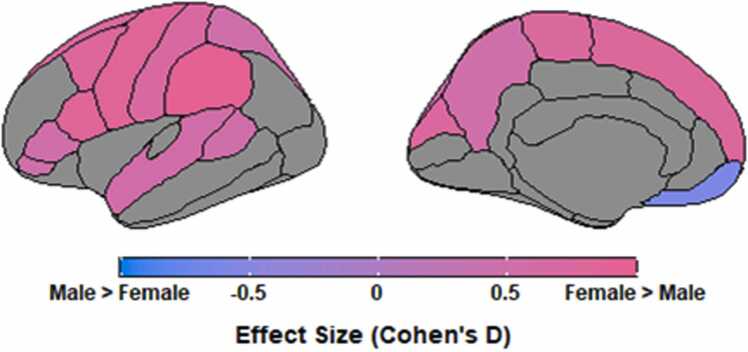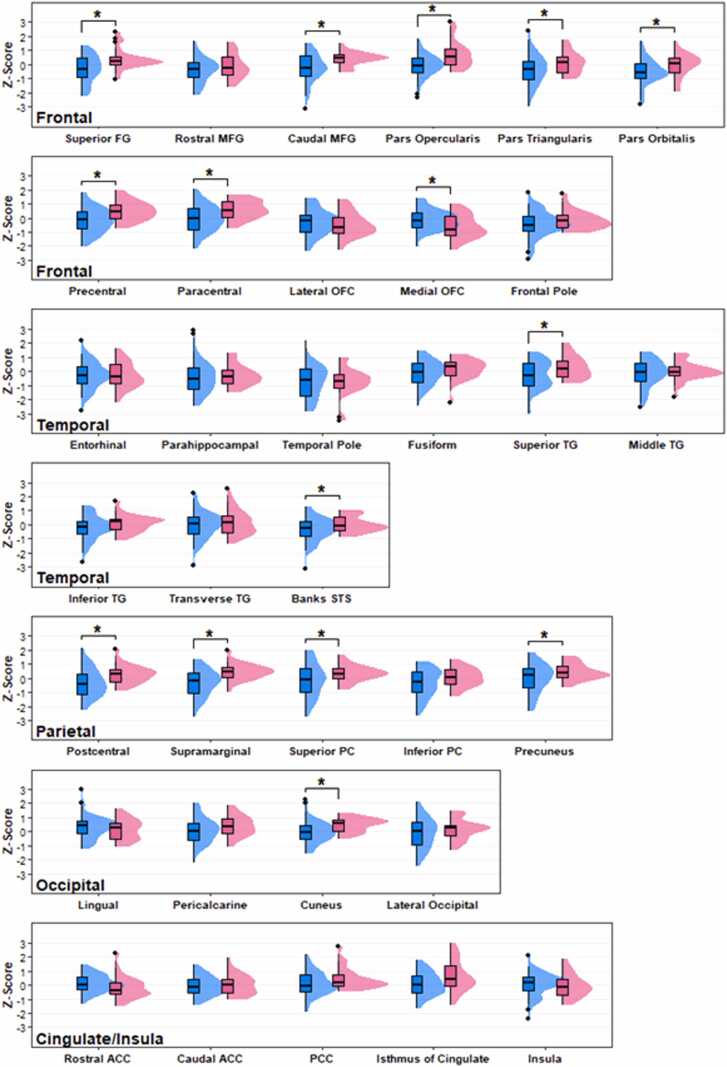Sex differences in normative modeling of cortical thickness in cannabis use disorder
IF 2.9
引用次数: 0
Abstract
Cannabis use disorder (CUD) is associated with sexually dimorphic behavioral and neurobiological effects, but sex differences in a broader sampling of brain structures in CUD assessed relative to normative reference values have not been examined. Here, we assessed sex differences in brain regions measured via 3 T MRI in 72 adults (50 males, 22 females) with CUD. T1-weighted images, segmented via FreeSurfer, were used to derive Normative Morphometry Imaging Statistics z-scores (accounting for age, sex, intracranial volume, and image quality). Z-scores were then compared between sexes and associated with behavioral data. We found that average z-scores were within normative ranges for both sexes. There were no sex differences in total brain, cerebral white matter, and subcortical gray matter z-scores, but total cortical thickness z-scores were greater in females. Fourteen cortical regions surrounding the central and lateral sulci had greater z-scores in females than in males, but the medial orbitofrontal cortex z-score was greater in males. Of these regions, 3 were positively correlated with cannabis-related problems. Findings suggest sexual dimorphism in brain structure in CUD primarily in the frontal, medial parietal, and superior temporal lobes, with some association with cannabis-related problems even in the context of normative brain structure. Future research is needed to clarify causal mechanisms of morphometric differences in CUD.


大麻使用障碍皮质厚度规范模型的性别差异。
大麻使用障碍(CUD)与两性二态行为和神经生物学效应有关,但在更广泛的CUD脑结构样本中,相对于规范参考值的性别差异尚未得到检验。在这里,我们评估了72名患有CUD的成年人(50名男性,22名女性)通过3t MRI测量的大脑区域的性别差异。通过FreeSurfer分割的t1加权图像用于得出规范形态测量成像统计z分数(考虑年龄、性别、颅内容积和图像质量)。然后将z分数在性别之间进行比较,并与行为数据相关联。我们发现男女的平均z分数都在标准范围内。脑总、脑白质和皮质下灰质z-score无性别差异,但皮质总厚度z-score在女性中较高。在中央沟和外侧沟周围的14个皮质区域,女性的z-score高于男性,但内侧眶额皮质的z-score高于男性。在这些区域中,有3个与大麻相关的问题正相关。研究结果表明,CUD患者大脑结构的性别二态性主要出现在额叶、内侧顶叶和颞上叶,甚至在正常大脑结构的情况下也与大麻相关问题有关。未来的研究需要阐明CUD的形态计量差异的因果机制。
本文章由计算机程序翻译,如有差异,请以英文原文为准。
求助全文
约1分钟内获得全文
求助全文

 求助内容:
求助内容: 应助结果提醒方式:
应助结果提醒方式:


